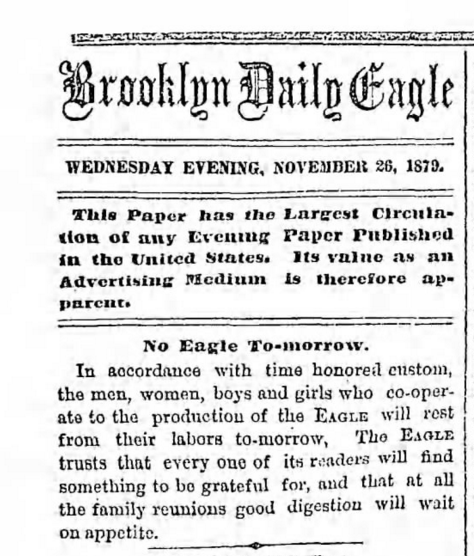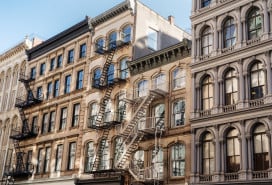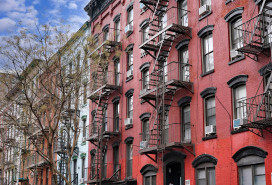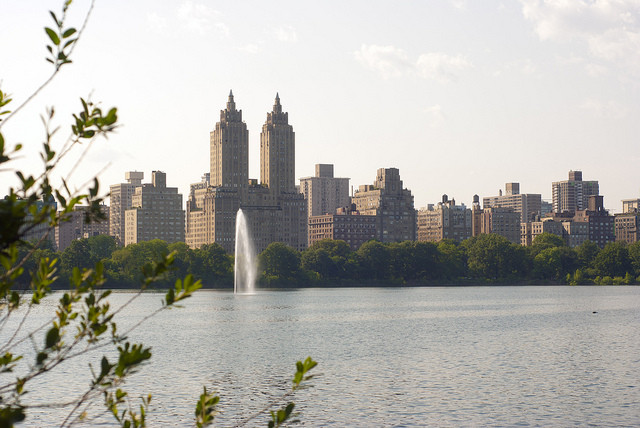How New Yorkers have celebrated Thanksgiving over the years
The festive gathering that Americans think of as the "first Thanksgiving"—a feast held by Pilgrims and Wampanoag Indians to celebrate the autumn harvest—unfolded over three days in 1621, writes Time, but the holiday as we know it today wasn't enshrined until over 240 years later. Per the New York Times, in 1863 President Lincoln decreed that the last Thursday in November would be a national day on which to express gratitude for family, good health, and, naturally, food.
NYC, meanwhile, didn't host its first signature Thanksgiving extravaganza—the Macy's parade—until 1924, but well before then, the city clearly knew how to throw a holiday party. We did some digging through archival photographs and articles, and gained new insights into how the New York of old expressed thanks.
Putting on a parade
Macy's debuted its elaborate Thanksgiving Day parade in 1924, at a time when many of the department store's employees were new immigrants to the United States who were eager to celebrate their adopted home but in a manner that recalled festivals from their birth countries in Europe, explains Baruch College's NYCdata website. As this Curbed retrospective reveals, ornate floats figured prominently from the start. Early on, too, the parade heralded the beginning of the December holiday season, with Santa making an appearance at the very first one.
Partying on Thanksgivings past
But even before the parade became an annual NYC tradition, New Yorkers were embracing the opportunity to eat, drink, and be merry. As early as 1879, the Brooklyn Daily Eagle was doing right by its employees by letting them take the day off, and wishing that all its readers find something to be grateful for, as well as enjoy "good digestion."

No wonder, given the kind of eating many New Yorkers were doing back then. Take a look at the menu for this 1891 Thanksgiving Day feast:

Dishes like "diamond back terrapin"—also known as turtle—now belong to Thanksgivings past, as does the site of this celebration: the Murray Hill Hotel. Daytonian in Manhattan offers a fascinating history of the hotel, which was opened in 1884 on Park Avenue between 40th and 41st Streets and visited by luminaries like P.T. Barnum and Mark Twain; it was replaced by an office tower in 1948.
One rather oddball, long-abandoned Thanksgiving tradition in NYC was "Ragamuffin Day." According to the New York Public Library's blog, before Halloween became a popular ritual, children dressed up as beggars and asked neighbors for Thanksgiving Day handouts of coins and candy.
The practice, which began around 1870, seems distasteful given that there were thousands of actually homeless children on the streets of New York at the time. But what eventually put a stop to the custom of children donning rags and panhandling were complaints that adults were "annoyed" by it.
How "the other half" celebrated
Of course, not all New Yorkers had the means to indulge in multi-course meals for the holiday. And while giving to charity has long been considered a crucial component of Thanksgiving fesitivities, the Ultimate History Project explains that in the 19th century, when thousands of newcomers to New York were passing through Ellis Island, one of the motivations for feeding the poor on the holiday was to assimilate immigrants to an American tradition.
The image below depicts a Thanksgiving gathering at the "Home for the Friendless," which, as Ephemeral New York explains, took in orphaned and abandoned boys and girls, many of them the children of immigrants.

It's worth noting that while much has changed about how New York observes Thanksgiving, there is still a great need for generosity. If you'll be in town and have time to volunteer, take a look at Gothamist's list of opportunities to donate, deliver food, and more on Thursday.
You Might Also Like






























